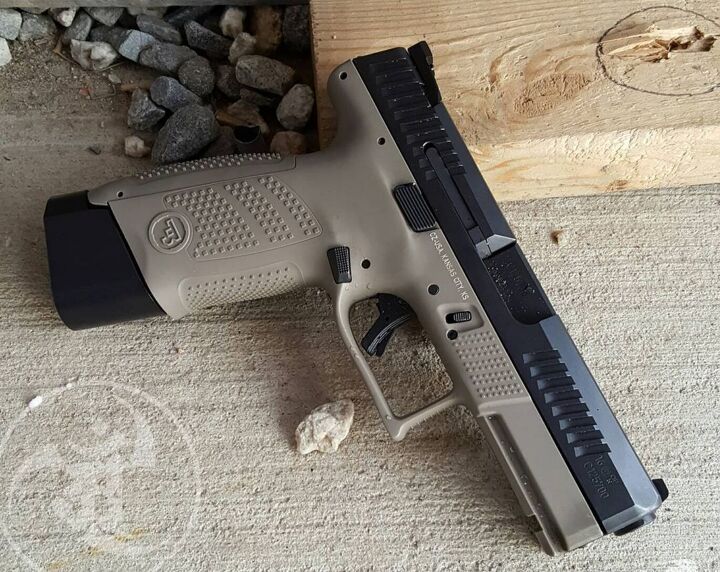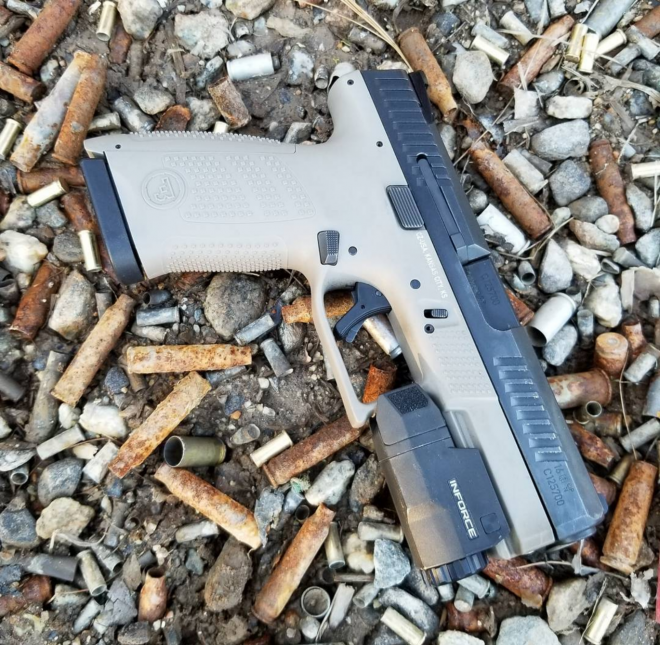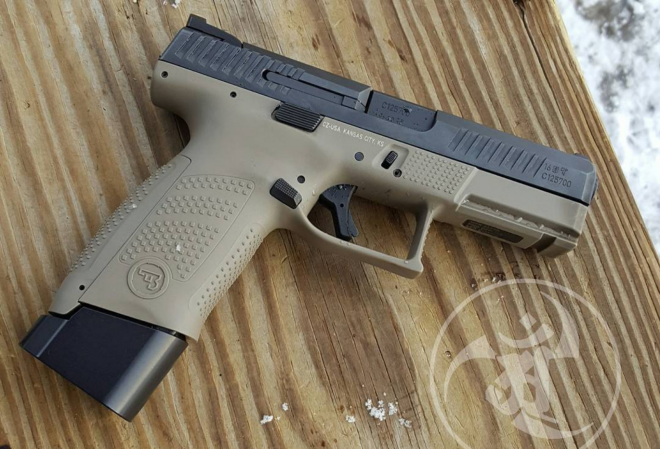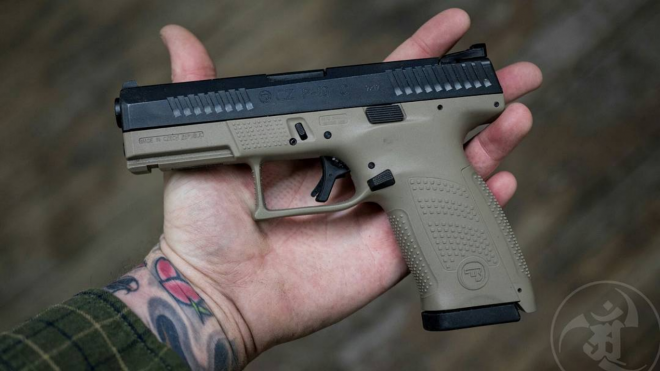The CZ P-10 C is quickly becoming an iconic pistol. Chambered in 9×19, the P-10 C has many features that other pistols in its category do not, while being more affordable than many of its competitors. I’m not going to give a clinical description of the firearm — I’m here to tell you why I fell so deeply in love with this pistol and why it usurped the M&P and Glock as my favorite striker-fired pistol. This will be a three-part series through the evolution of pre-production to current manufactured P-10 series pistols.

Editor’s Note: Alex is an engineer, business owner and avid shooter. As a professional in the firearms industry, he is allowed access to firearms during their development phase and he’s agreed to share his personal experiences here at TFB. Alex is a personal friend and I appreciate the depth of his knowledge and experience.
TFB EXCLUSIVE: Pre-Production Development of The CZ P-10 C – Part 1
Rewind to 2016 – I was approached by CZ-USA to test the pre-production CZ P-10 C and I was ecstatic at the opportunity. At the time, I was carrying a CZ P-07 “Cajunized” DA/SA 9×19. I tend to switch back and forth between hammer and striker fired guns. As it always does, nostalgia kicked in and I’m currently back into hammer guns.
CZ P-10 C – Specifications
- Manufacturer page: https://cz-usa.com/product/cz-p-10-c/
- Chambering: 9mm Luger
- Magazine Capacity 15+1
- Frame: Fiber Reinforced Polymer
- Trigger Mech: Striker
- Barrel: 4.02in
- Height: 5.2in
- Weight: 26 oz.
Grip Texturing Not for the Faint of Heart
Picking the gun up out of the box, its grip texturing instantly presses deep into my palms. It’s aggressive and I like it. Finally, an out-of-the-box production gun with grip texturing that works as advertised. The grip texture is not for the soft hands, this grip was designed for hard use and absolute traction. It comes from the factory with the small palm swell installed. I release my grip; the square texturing has left deep imprints into my hand. Never have I experienced such a pronounced grip. Purpose-driven, with no real need for aftermarket stippling. Another nice grip feature was the aggressive texturing pad where the user’s support hand thumb rests. It not only creates a friction point for the support hand thumb, but an area to develop muscle memory grip return for consistency on draws and pressing the gun outward.
The next notable feature was the ergonomics and natural grip angle. The webbing of my thumb sits deeply into the backstrap above the swell, it feels like an extension of my arm. There is no beavertail on the P-10C, which did disappoint me. The rear of the frame where it meets the rear of the slide (where the beaver tail should be) is slightly boxy. I ride very high and tight on my grip and these corners are slightly hot-spotting my thumb knuckle. I do have gorilla hands, so that’s a factor.

The trigger guard is long. It has more than adequate room to fit gloved fingers. The undercut of the trigger guard, where it meets the front strap, has a gradual swoop. A larger radius. I’m enamored at this feature. My one biggest qualm with the Glock grip is the tight trigger guard undercut radius that fits the fingers of an adolescent child, not that of a grown man. The Glock undercut severely hotspots my middle finger knuckle. This causes uncomfortable blistering. The P-10 C undercut is also much wider where it meets the frame compared to the front of the guard creating an area that contacts the dominant hand’s middle finger more evenly.
Following the P-10 C frame forward, the dust cover has a singular Picatinny slot at the same positioning that a Glock has. This means lights that are “Glock Specific” or a Glock type insert would work well with the P-10 C platform.

The magazine release is a smaller, knurled release. A true ambidextrous magazine release. Thank you, CZ. Finally, a tactile, properly-functioning ambidextrous release. It felt slightly stiff out of the box, but after a handful of magazine changes, it smoothed right out.
Pre-production Trigger was the best P-10 C Trigger
I truly miss the pre-production P-10 C trigger. A thin, flat faced trigger finding itself almost in contact with the bottom of the trigger guard. No room to create a pinch point if the trigger is ridden low. The “dingus” or trigger blade safety was a short press from release and did not obstruct the user’s finger in any way when getting back on it quickly. In my opinion, the trigger press was the smoothest press, shortest press, and shortest reset in a striker fired gun to date.
Keep in mind, I’m describing the pre-production P-10 C trigger. The reset was not the most tactile nor audible. That didn’t matter to me, the reset was so short and smooth, my desire for a tactile reset went out the window – I was an absolute fan. The trigger was measuring in at a flat 4.0lbs press, with roughly 3 or so millimeter of travel back to reset.
READ: CZ Adds New Pistols To The P10 C
Slide Serrations that Work
The slide is a fantastic work of both aesthetic faceting and utility. The P-10 C is a flush fit to the front of the dust cover. Arguably, the most aggressive front and rear cocking serrations currently. Deep cuts that look as if a wheel cut them, rather than an end mill. The serrations were slightly burred, but the robust coating slightly muted the burrs. I enjoyed the aggressiveness. Wet, slippery hands would not lose grip. I noticed the rear sight sat in a slight downward step at the rear of the slide. Almost lower profile, but still had a ledge to rack off if one-handed manipulation were necessary. This pre-production P-10 C came equipped with steel, P-07 glow sights.
The P-10 C barrel is thick walled with a very blocky, robust chamber. Cold hammer forged in the CZUB factory, one of the world’s greatest barrel making facilities. The barrels have tens and tens of thousands of round count life to them. P-10 C also has ambidextrous slide stops. They are long and wide with serrations parallel to the slide but does not add much overall width to the pistol. The slide stop also took a few magazine changes to loosen up.

The takedown of the P-10 C is similar to a Glock. Some slight rearward pressure on the slide is necessary for it to release. The front and rear frame insert rails are a tight fit to the slide with little to no play with the slide locked to the rear – I knew this was going to be an accurate gun.
Shooting the pre-production P-10 C was dreamy. The low bore axis attributes to very little muzzle flip and felt recoil. There is an absolute balance between recoil spring tension and slide weight. The slide snaps back onto target consistently and repeatedly. Felt recoil paired with that insanely light trigger press made it a very fast gun. This was a well thought out gun, and I looked forward to the production version.
Stay tuned for Part 2 of the pre-production development of the CZ P-10 C.
We are committed to finding, researching, and recommending the best products. We earn commissions from purchases you make using the retail links in our product reviews. Learn more about how this works.
 Your Privacy Choices
Your Privacy Choices
